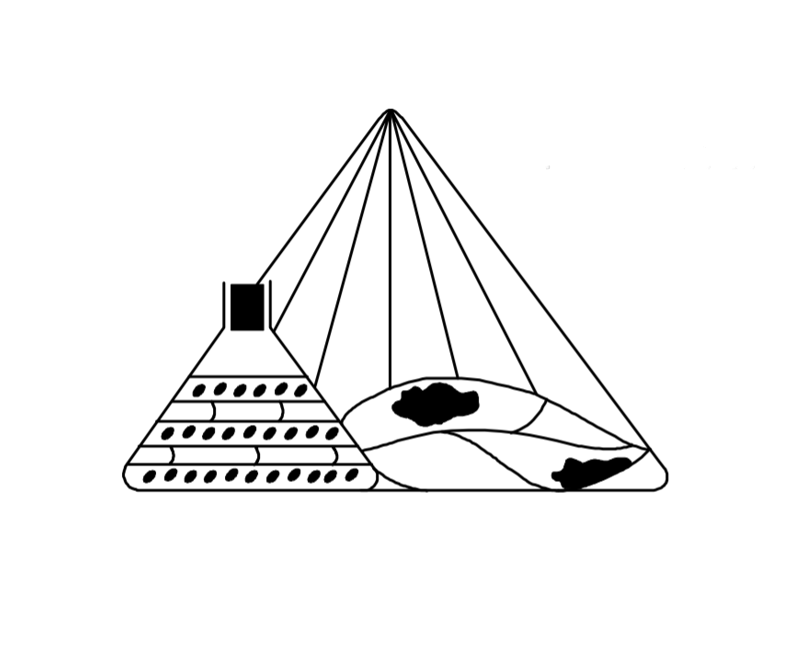Workshops

Workshop 1
The International Bioherbicide Group Workshop 2023
Organisers: Professor Sheng Qiang 1, Dr Graeme Bourdôt 2, Dr Maurizio Vurro 3
1 Nanjing Agricultural University, China, IBG President
2 AgResearch, New Zealand, IBG Vice President
3 Institute of Sciences of Food Production, Bari, Italy, IBG website manager
Date: Sunday 7th afternoon
The aim of this International Bioherbicide Group workshop is to provide a forum for scientists and students from around the world to present and discuss their research into plant pathogens as potential bioherbicides. Although bioherbicides have proven to be an alternative to conventional weed control approaches, many constraints remain that must be overcome to enable their wider application. The need for effective bioherbicides is increasing with the ever-increasing evolution of herbicide resistance in weeds, public health and environmental concerns over herbicide use, increasing industry and market requirements for residue-free farm produce, regulatory constraints on herbicide application practices, fewer new herbicides becoming available, withdrawal of herbicides from the market, and the global increase in organic agriculture. The IBG’s last joint meeting was held in Engelberg, Switzerland, in August 2018 as an integral part of the 15th International Symposium on Biological Control of Weeds. So, this workshop in Argentina, linked to the 16th ISBCW, provides an opportunity to meet and discuss the research we have been conducting in the interval. Please consider coming to Argentina in May 2023 to share your insights into how we can overcome the barriers to the wider adoption of bioherbicides.
Please submit your Abstract to abstracts@isbcw-iguazu.com (Subject: Bioherbicide Workshop) so that we can determine the programme for the workshop. Abstracts will be included in the XVI ISBCW Proceedings..

Workshop 2
IOBC Global Cactus Working Group
Iain Paterson1
1 Centre for Biological Control – CBC
If you are interested in participating in this meeting, please contact I.Paterson@ru.ac.za

Workshop 3
International Collaboration for Tamarix Biocontrol
Tom Dudley 1, Alex Gaffke 2, Dan Bean 3, Fernando McKay 4, Massimo Cristofaro 5
1 Univ of California, Santa Barbara, USA
2 USDA Agric Research Service, Tallahassee, Florida, USA
3 Colorado Dept of Agriculture, Palisade, CO, USA
4 FUEDEI, Buenos Aires, Argentina
5 BBCAonlus, Rome, Italy
Tamarix spp. comprise a complex of Old World woody plants invasive in North and South America, South Africa and Australia. A biological control program in North America has been a politically-charged, mixed success that is far from complete, yet is potentially applicable to other regions of the globe. This workshop will bring together researchers from the invasive and native ranges of Tamarix to discuss its ecology and management, evaluate the current biocontrol program status and constraints, and explore opportunities for international cooperation for a renewed program for research that can improve development and outcomes of Tamarix biocontrol across biomes.

Workshop 4
Future prospects for biological control of weeds in Europe
Sonal Varia 1, Philip Weyl 2, Vincent Lesieur 3, Hélia Marchante 4
1 CABI, Bakeham Lane, Egham, Surrey, TW20 9TY, UK
2 CABI, Rue des Grillons 1, CH-2800 Delémont, Switzerland
3 CSIRO European Laboratory, 830, avenue du campus Agropolis 34980 Montferrier sur Lez, France
4 Instituto Politécnico de Coimbra, Centre for Functional Ecology, Portugal
Classical Biological Control (CBC) has been utilised globally for over a hundred years, but although Europe has been the source of both invasive weed targets and biocontrol agents, it is lagging behind. The first intentional classical release against a weed in the EU took place in the UK with the release of the psyllid Aphalara itadori against Fallopia japonica in 2010. This was followed by further agent releases targeting Impatiens glandulifera, Crassula helmsii and Hydrocotyle ranunculoides in the UK, Acacia longifolia in Portugal and Fallopia japonica in the Netherlands. Due to these biocontrol programmes the regulatory processes for CBC agent release have now been established in these countries. There is a growing appetite from European governments and stakeholders to implement biological solutions for invasive weed problems, which is already opening up future opportunities for CBC in Europe. In this workshop we plan to explore how we as biological control researchers can capitalise on these opportunities through closer collaboration, both within Europe as well as with counterparts overseas.

Workshop 5
Augmenting classical weed biocontrol with genetic control technologies – exploring risks, realities and opportunities
Kumaran Nagalingam 1, Ben Gooden 1, Michelle Rafter 1, Mariana Campos 1, Gavin Hunter, Dean Brookes 1
1 CSIRO
Novel genetic technologies, such as gene silencing (e.g., RNA-interference or RNAi) and gene drives, have the potential to transform weed management systems globally. There is growing momentum around developing genetic control technologies targeting insect vectors of disease, rodents, and social acceptance of genetic technologies more generally. Research and development of such genetic control technologies are well-advanced in insect vectors and vertebrate pest systems (e.g. proof-of-concept for laboratory mice and zebrafish and field validation in malarial vectors). In contrast, development of genetic control technologies in weed management is in its infancy but set to gain pace over the next few years as high-quality reference genomes for invasive plant species become available and priority targets for genetic control are identified.
Classical weed biocontrol has proved to be the most sustainable and safe means of controlling widespread, well-established weeds at landscape scales, with high benefit-cost ratios. Genetic technologies promise to hold enormous potential to support classical biocontrol and/or to develop improved integrated weed management options. However, how classical and novel genetic biocontrol methods may be integrated have yet to be critically evaluated. The aim of this workshop will be to explore opportunities, support for and potential roadblocks to the development and application of novel genetic technologies to improve the efficacy of classical weed biocontrol.

Workshop 6
Are we being too risk averse? Is it time to consider ‘seemingly oligophagous’ agents for release?
Hariet L. Hinz 1, Sonja Stutz 1, Philip Weyl 1
1 CABI Switzerland
Coordinator: Hariet L. Hinz, h.hinz@cabi.org
We define ‘seemingly oligophagous’ agents as agents that have a broad physiological host range, meaning that several species in several different genera in the same family are attacked, when tested under no-choice conditions, but a very restricted host range (though not necessarily monophagous) when tested under more natural conditions in the open-field (ecological host range). When subsequently adding additional filters such as lack of geographical or habitat overlap, asynchronous phenology or inability to produce multiple generations on the non-target, the actual realised host range may well be restricted to the target weed. So from a pure biological viewpoint there is little reason to believe that any plant species other than the target weed would act as permanent hosts of such an agent. However, if the target and non-targets – that form part of the physiological host range of the agent – would grow intermixed at sites, spill-over would be likely, albeit restricted in time and space.
We argue that potentially effective agents are currently not being petitioned because of a too strong emphasize on the physiological host range of the agent. Have we as weed biological control scientists become too cautious, do we need to be more trusting of the ecological host range including additional ecological filters? Examples will be presented to start the discussion.

Workshop 7
Crossing the Equator: Consequences of hemisphere-shift on the establishment and post-release performance of biological control agents.
Francisco A. López-Núñez1; Liliana Duarte1,2; Hélia Marchante1,2; Elizabete Marchante1.
1 Centre for Functional Ecology, Associate Laboratory TERRA, Department of Life Sciences, University of Coimbra, Calçada Martim de Freitas, 3000-456 Coimbra, Portugal.
2 Escola Superior Agrária, Instituto Politécnico de Coimbra, Centre for Functional Ecology— Bencanta, 3045-601 Coimbra, Portugal.
The phenologies of many interacting organisms are expected to change in the future with climate warming. However, if these changes between the agent and its host occur at different paces, there will be periods where the phenological matching of agents and hosts will be disrupted, affecting the agent performance, and therefore the success of the biological control program. Unfortunately, this issue has not received much attention to date.
The movement and interchange of biological control agents towards and between hemispheres is a common practice by managers and stakeholders. However, the success of a biological control program may be influenced by numerous biotic and abiotic factors (i.e. predators, phenological synchronisation, climate, habitat quality, etc..). As such, the influence of these factors may limit, or even hamper the establishment of the biological control agent.
The interchange between hemispheres might be especially relevant for specialised agents, which depend on a phenological matching (i.e. presence of specific vegetal organs or tissues to complete its life-cycle) between the populations of the agent and its host as consequence of its higher intimacy interaction level (e.g. gall making insects, miners). However, the implications of these interchanges between hemispheres and the legacy impacts of the potential phenological asynchronization between the agent and its host are seldom evaluated. In fact, despite the myriad of potential influencing factors, a recent evaluation of the success of 377 biocontrol programs at global scale revealed a high proportion of programs (45%) where the limiting factors were unknown or undetermined. Moreover, climate or habitat incompatibility are an often-cited explanation (39%) for the failure of agents to establish or adequately control a targeted species. In contrast, only 2% of the programs were limited by some kind of phenological synchronisation between the agent and the targeted weed, raising some red flags.
The release of Trichilogaster acaciaelongifoliae as biological control agent against Acacia longifolia in Portugal in 2015 from a South African population will be used as a case study. This workshop aims to shed some light on the implications of the hemisphere-shift on the establishment and performance of biological control agents. Finally, the outcomes of this workshop will be relevant to pave the path to a more efficient and safer practice of modern biological control of weeds.

